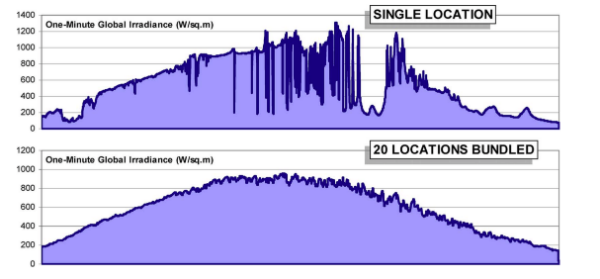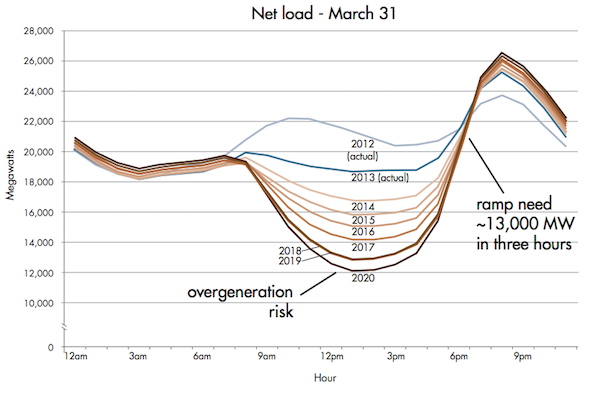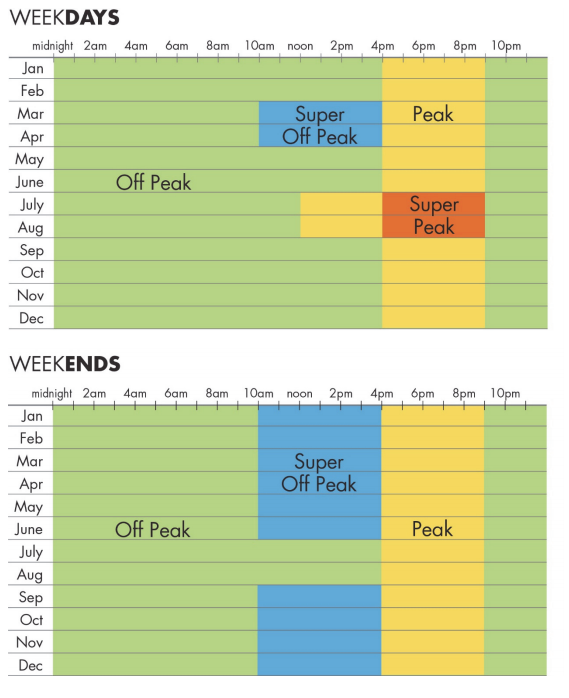This article was published in Scientific American’s former blog network and reflects the views of the author, not necessarily those of Scientific American
With California poised to enact legislation mandating half of its electricity come from renewable sources by the year 2030, the grid operator is already bracing for the impact that growing use of solar energy could have on the state’s grid. Supplying a significant amount of the state’s electricity from a technology like solar—that only produces energy during daylight hours—has the potential to throw off the usual dynamics of the state’s grid and electricity market. However, the grid operator has already devised strategies to make integrating solar energy easier, including a first of its kind proposal to decrease electricity rates during daytime hours—exactly when solar energy is most available.
Despite conventional notion, the California grid operator’s concerns about solar energy don’t stem from the fact that its output can change quickly and unexpectedly due to the presence of clouds or other forms of shading. Fast fluctuations in the power output of solar panels tend to average themselves out as more and more solar farms or rooftop solar arrays are interconnected, as illustrated in the figure below.

Data collected through the Atmospheric Radiation Measurement (ARM) program reveal how aggregating solar resources across a utility territory significantly reduces second-to-second variations in power output, even when only 20 locations are combined. (Source: Perez et al., 2009)
On supporting science journalism
If you're enjoying this article, consider supporting our award-winning journalism by subscribing. By purchasing a subscription you are helping to ensure the future of impactful stories about the discoveries and ideas shaping our world today.
With many thousands of rooftop and utility-scale solar arrays feeding into California’s grid and averaging each other out at any given time, the grid operator is not terribly concerned about fast fluctuations in solar output. Rather, the concern is that the state’s conventional power plants will not be able to turn on and off quickly enough to compensate for the slower, bell-shaped variation in solar energy that occurs each day as the sun rises and then sets. In its now famous “duck curve,” California’s grid operator forecasted how increasing solar production would impact the net load (electric load minus renewables production) over the day, and found that net load would likely transition from mostly flat today to highly variable in the future.

The California grid operator (CAISO) has projected that growth in solar energy required to meet the existing 2020 renewable portfolio standard will lead to "overgeneration" of solar energy in the middle portion of the day and rapidly increasing demand for electricity from conventional power plants in the early evening. (Source: CAISO)
To compensate for the variable electricity supply from solar, the grid operator has proposed new time-varying electricity rates that incentivize use when solar energy is most plentiful, signaling a paradigm shift in the way electricity rates are used to influence customer demand:
Historically, time-variant pricing focused on the “peak” periods, the times when electric supply was scarce. Critical peak pricing signals higher energy prices to customers, encouraging them to conserve during those times, which can avoid the need to invest in additional generation and help keep electric costs down. Now, in this era of plentiful electricity from renewable sources, we need to alert customers not only to times when supply is constrained, but also when there is a surplus, to provide incentives to consumers to take advantage of low-cost electricity.
The newly proposed rates would offer a significantly lower electricity price to customers during “super off-peak” periods from 10 a.m. to 4 p.m. most weekend days and weekdays during March and April. To compensate for the low price offered during these super off-peak periods, customers would be charged a significantly higher “super peak” rate from 4 p.m. to 9 p.m. on weekdays in July and August, when electricity demand peaks due to increased use of air conditioning. Outside of these “super” peak and off-peak periods, customers would be charged more typical electricity rates during designated “peak” and “off-peak” hours.

California’s grid operator has proposed new time-varying electricity rates that incentivize electricity use when solar energy is most plentiful. (Source: CAISO)
The hope is that the proposed rate structure will incentivize customers to shift their demand for electricity from the evening to the middle of the day, when plenty of low-cost solar electricity is available. By doing so, the rate could help California reduce its need for backup fossil fuel power plants or costly energy storage going forward.
The newly proposed rate is just one example of how market price signals can be used to ease the integration of renewable energy, and likely just one of a suite of strategies and solutions we’ll see from California as the state increases its use of solar and other forms of renewable energy over the coming years. The rest of the country will certainly be watching as trailblazers like California charge ahead.